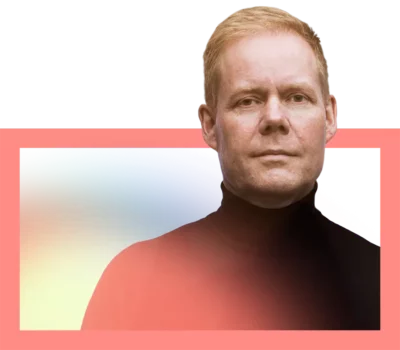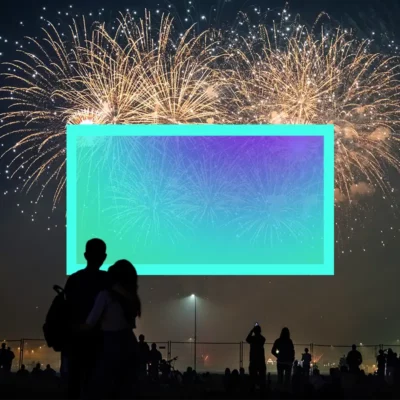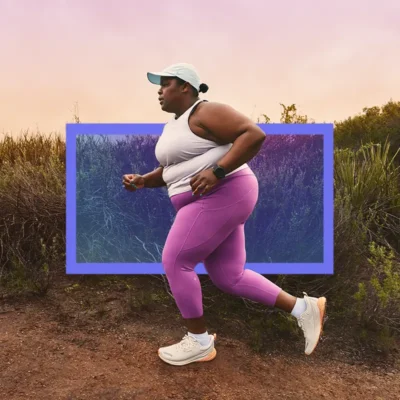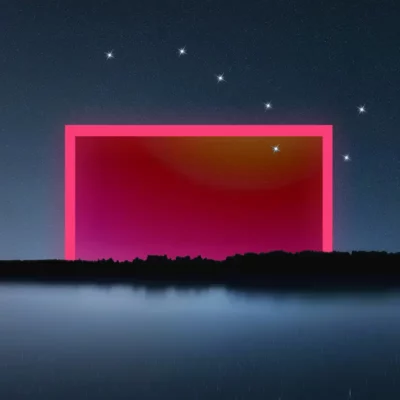Music, memory, moments
As a young composer, Max Richter is searching for his voice, the sound of a music that is uniquely his. But what he has is only a box of fragments, song experiments, half-formed questions. He sits with them, he thinks on them, he lets them mature – and then he realizes: This is exactly the music he wants to make. As he shapes the fragments into his early masterpiece Memoryhouse, he finds the beauty in moving between modes, working in the mysterious space out of time that only music can create.
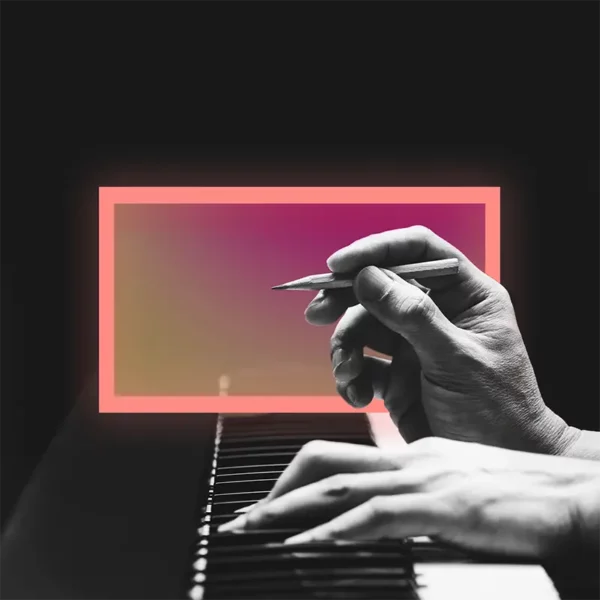
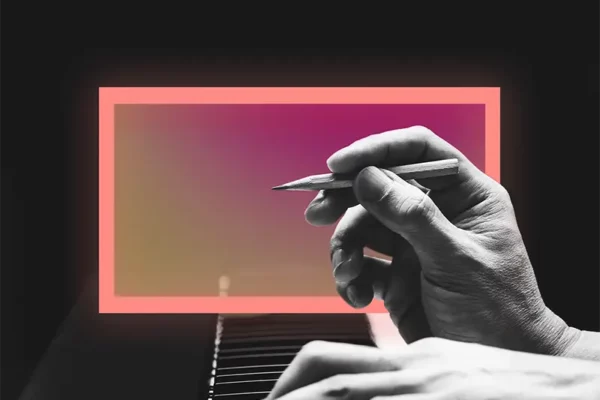
Table of Contents:
Transcript:
Music, memory, moments
MAX RICHTER: I come to a part of the trail studded with 38 different prayer monuments – 20 to 30-foot-tall tree trunks arranged in the shape of an infinity symbol, each with a different quote from the Buddhist Heart Sutra carved into it. Above my path is an archway, with a phrase written in English as well as Chinese.
“There is no time, what is memory?” The question stops me in my tracks.
“There is no time, what is memory?”
I’m hungry, dehydrated, tired, disoriented. I am feeling lost. And embracing that feeling of lost-ness all day. All of my defenses are down, right now. Right now, I’m more ready to accept a new way of thinking than I ever have been.
This concept of a world without time captivates me.
ROHAN GUNATILLAKE: Max Richter is one of the great composers working today. And I have to confess to being entirely in love with his work. You may have listened to his albums starting with 2002’s Memoryhouse through to Voices from last year. But you’ll have definitely heard his music in some of the best films and TV shows of recent years: Ad Astra, Arrival, Jiro Dreams of Sushi, Black Mirror, Bridgerton. I could go on.
In today’s Meditative Story, Max shares experiences from his life that occur at the edges of conscious thought – somewhere in the in-between spaces of awakeness and dream. It’s an ethereal story, unlike any other in our series, so allow yourself to follow his reflections, wherever they take you.
In this series, we combine immersive first-person stories and breathtaking music with the science-backed benefits of mindfulness practice. From WaitWhat this is Meditative Story. I’m Rohan, and I’ll be your guide.
The body relaxed. The body breathing. Your senses open, your mind open, meeting the world.
RICHTER: The door makes a reassuring, muted “click” as my mother shuts it behind her. I close my eyes, curl up into a little ball under the covers, and hope I don’t have the same dream again tonight.
But as soon as I fall asleep, it begins. The jagged world dream. In it, some dictator has declared that absolutely everything in the world must be jagged. The roofs of buildings, dining room chairs, backpacks, bicycles, cars. Even animals. Everything I see, all day long, has rough, spiky jagged edges.
It’s not just weird or off-putting. It’s deeply unsettling to see nothing but jaggedness everywhere.
In that dream, I’m part of the resistance. We scheme and plot and work together to overthrow the tyrant. Somehow, it works – and we’re in charge now. We use our newfound power to replace all the jaggedness … with smoothness. We think we’ve won.
But everything being smooth is just as bad. Smooth trees, smooth yards, smooth faces. I stand on a street corner in my neighborhood, spin around and everything I can see is completely smooth.
I wake up sweaty, with my covers tangled around my legs in loops.
The classical music I play in my piano lessons is mostly smooth and gentle, preludes, sonatas, sonatinas, I love them all.
My father is an engineer, with an industrious, German mindset. My mother is kind, generous, but impractical. My father is always in a suit. Later, he bought jeans, which he wore with his shirt tucked in, and buttoned all the way up. My mother wears floral dresses and an apron, the uniform of the German Hausfrau. My father believes music is not a real thing. Certainly not something his son should be doing. My mother thinks anything I do is wonderful, but her voice is not heard in the household.
When I am three years old, the family follows my father’s work from, from Germany to the UK, to Bedford, a nondescript town north of London. My new school feels dangerous. I’m alone, cripplingly shy. The boys play rugby in the schoolyard, tumbling and tearing around. It’s hard to make friends
I’m not good at rugby or cricket. I’m bullied. I stand in a corner with my hands stuffed into my pockets, fingering scales on the piano that no one can hear. I mean, I’m obsessed with music – it’s a world that makes sense to me.
Then, I discover experimental rock and punk. I play albums by Stiff Little Fingers and the Sex Pistols over and over in my room. What’s so weird about punk is, with the hardcore bands, they can’t really play, but they do have something to say. Somebody has a guitar and they’re talking to you about something that’s important to them. That’s the whole point, while classical music is all about organization and structure and everything in its right place. In my house, the piano is downstairs, the stereo is upstairs. I keep the two strands of music in completely different parts of my brain.
All the while, I continue to have that same dream with jaggedness and smoothness. Almost every night for about 4 years. My whole life, I’ve been this way. Once an idea finds me, it doesn’t let me go.
GUNATILLAKE: Jaggedness and smoothness. The words, a reflection of their qualities. Jagged and smooth. Which do you recognize in yourself? In the breath. In the movements of the mind?
RICHTER: It’s a hot, muggy day in Hong Kong, 30 years later, around the millennium. I’m part of a contemporary music ensemble, and we’re playing tonight at a festival.
But I have most of the day off, so I decide to visit the famous Tian Tan Buddha. It’s a 112-foot-tall bronze statue that towers over Lantau Island near Po Lin, a Zen Monastery. I pick up my guidebook, skim the pages on Lantau and The Big Buddha, and tuck the book in my shoulder bag.
I board a green, white, and orange ferry for the hour-long ride to the island. The spray of the waves slapping against the side of my face creates a refreshing mist that cools the air around me. The sun’s rays heat my face.
When I disembark on the pier at Lantau Island, I try to get my bearings from the nearby signage. It’s disorienting – but not in a bad way. I speak German and English, but no Cantonese. The signs and maps feel like visual confetti all around me. I find them beautiful, but not informative.
I have a sense of where the monastery and the Big Buddha are located on the island, and I set off across the hills in what I believe is roughly the right direction. The path splits and recombines and splits again. My certainty crumbles. The guidebook is in my bag. I could consult the folded map and figure out the most direct route. But I give way to the circuitous journey.
After maybe an hour of walking over the hills in the blazing heat, I arrive at the monastery. The up-curved roofs are ornately decorated. But the building seems deserted, except for some friendly cats and dogs. I walk past the perfectly tended vegetable gardens and up the grand steps. I feel cooler air hit my nostrils as soon as I step inside the monastery. I see three life-sized golden Buddha statues inside, representing the past, present and future. I linger there, perfectly alone, examining every wall, and I realize how hot I’ve been all day.
I explore the grounds. Koi fish swim in a small pond. Dozens of potted plants that look like a combination of a lotus flower and an aloe plant surround a milk-white statue of… someone. Glorious flowers I’ve never seen before crowd my path. And then I look up, shielding my eyes from the sun, I suddenly see the 112-foot-tall Big Buddha statue looming overhead.
It’s absolutely breathtaking. The immense bronze figure radiates a sense of repose and feels incredibly peaceful. Looking up at it makes me feel dizzy. After a moment, I realize the sun is not as high up in the sky as I expect. I haven’t brought a watch or a phone so I have no idea what time it is. I don’t know how to get back to the pier or when the last ferry leaves. And I’ve got a gig tonight playing piano back in Hong Kong.
I begin to head back, but am no better at navigating this island than I was earlier. After taking a series of questionable turns, I come to a part of the trail studded with 38 different prayer monuments – 20 to 30 foot tall tree trunks arranged in the shape of an infinity symbol, each with a different quote from the Buddhist Heart Sutra carved into it. Above my path is an archway, with a phrase written in English as well as Chinese.
“There is no time, what is memory?”
The question stops me in my tracks.
“There is no time, what is memory?”
I’m hungry, dehydrated, tired, disoriented. I am feeling lost – and embracing that feeling of lost-ness – all day. All of my defenses are down right now. Right now, I’m more ready to accept a new way of thinking than I ever have been.
This concept of a world without time captivates me.
Memory. I remember the dreams of jaggedness and smoothness from my youth. Each night, that dream felt like a memory. I wonder if it felt like a memory the first time I dreamt it?
I remember seeing the enormously large Buddha outside the monastery just a few minutes ago. Or was it a few hours ago?
Can I “remember” what I’m feeling right now, in this instant? Is it possible to look forward to a memory … that hasn’t happened yet?
“There is no time, what is memory?”
I walk back towards the ferry in a daze.
GUNATILLAKE: No time. No then. No yet to be. No now. Just this. Just this to know and to enjoy.
RICHTER: A few years later, I’m descending the stairs, down, down, down, to the fourth floor beneath Soho, in the bustling centre of London. I come to this studio I’ve rented to work, but also, to sleep. My wife Yulia and I now have two tiny children and our life turns upside down. Good sleep is rare. And if something can’t be done in 40 minutes, then it can’t be done at all.
My little studio is like an underground bunker – a little room with uninspiring gray walls amidst a cluster of other studios. But to me it becomes a dream space where I work-sleep.
In here, I am creating without a goal. I make a little sketch, write it down, record it, forget about it.
I write in my bunker for months and months and months until I have a big collection of little things. In my sleep-deprived state, I’m running musical experiments. “I wonder if this works?” “Maybe, but maybe I’ll try another approach.” I’m feeling my way towards what my musical language could be. A totally unknown language. Elements of classical music, electronic music, punk, Renaissance counterpoint, Snippets, fragments, atoms. They come from my inner world, somehow, from my dream life, from Germany, to Lantau Island, to me learning the piano, to my studies in Edinburgh and in Italy, to London, but it’s all unbounded by time and space.
One day, I bring home a sketch of the music for Yulia. I play it to her, and, after it finishes, there is a long silence. At last, she looks at me and asks: “You wrote THAT?” I nod. And with perfect conviction she says, “So you’ve got to keep doing this now.”
I let my sketches sit for a long while and mature on their own. When I come back to them I understand each piece better than when I wrote it, and I begin making connections.
As each sketch goes from the box of unformed objects to the box of formed objects, it makes my life a little bit better. I’ve got this pile of half-written, half-formed musical questions, and every time I find the shape for ideas that point toward answers, I feel better. It is like taking a big breath in and letting it out slowly each time.
These sketches turn into my first large-scale composition. Like my dreams – like my memory – it is fragmented, episodic. Not made of big chunks of music, and not linear. It is not jagged or smooth. It is an explosion of these things together. Combined, the pieces have a propulsive energy.
One day I am finally ready to play it all back in total, all 75 minutes. I put on my headphones and sit down in the metal chair next to the couch. Hearing it come together in my gray bunker, I am transported. I close my eyes. The air stills around me. I feel connected to the act of writing that music, to the act of hearing that music, to hearing the first music I ever heard, to all of those things. I spend my whole life working with music, but in some ways it remains entirely mysterious. I ask myself, “How? How can it affect us so much? How does this time machine work?”
I open my eyes. I come back to myself, but I feel different. I realize everything in my life has been bringing me to this moment. Even the jagged dream, which haunts me with the idea that beauty lies in between. In the polarity between instrumental music and electronic music, the polarity between experimental atonality and tonality. I am breathing faster now. It’s absolutely all there.
It takes me 18 months to complete. I call it … Memoryhouse.
When I release the Memoryhouse album, nobody cares. It doesn’t fit into any category. There are no performances, no advertising, no sales. A few other composers take notice, but soon enough, even the record label itself is shut down.
For a moment, I ponder whether I actually completed and released that album, or if that, too, was a dream?
A decade passes. My children are teenagers now.
I arrive at the Barbican Centre one afternoon for a final pre-show rehearsal and soundcheck. I’m wearing a black turtleneck and my best jacket. My name and face hang from a banner outside. Memoryhouse is finally getting its world premiere.
The Barbican is one of the preeminent concert halls in London. It’s a beautiful brutalist ’60s concrete building with an interior that’s horizontal and vertically slatted wood surfaces. Hard lines everywhere, but it’s neither jagged nor smooth. To me, it’s beautiful.
Stepping into the performance hall, I close my eyes and I listen to the BBC orchestra tuning up. First the strings, then winds, then brass. I check that the computers and synthesizers are all set up correctly. I see the audience out front, which feels like a big family of fellow travelers.
I am not a child dreaming – I am wide awake.
I am not a disoriented wanderer – I am grounded, in a city I know very well.
I am not a sleep-deprived unknown composer – I am well rested and well established.
But this moment still feels unreal. Unreal, like most of the other defining moments of my life have felt.
I think back to the Zen saying inscribed on that archway on Lantau Island.
There is no time, what is memory.
And I think: Even if time doesn’t exist, I’ll always cherish this memory.
Rohan’s closing meditation
GUNATILLAKE: Thank you, Max.
I too have walked that trail on Lantau Island. Through an accident of history my family lived in Hong Kong in my early childhood and I’ve had the occasion to go back when a bit older.
The Heart Sutra is one of the most important passages of teaching in Buddhism, particularly the traditions in East Asia. It’s dense and cryptic, the kind of teaching that it takes a lifetime to unravel. Or an instant. No difference.
It’s a wisdom teaching about interdependence and freedom. About how nothing really exists in and of itself and the liberation that is the natural result of knowing that.
But walking the sutra is something else. Taking your time. The next verse arriving at your own pace. Space between the words to walk and move.
Big skies above you. The sea. The land. Space. Breath.
It was the line about time and memory that so captured Max.
But there is actually another line in Max’s creative story that is echoed in the Sutra.
When he’s writing Memoryhouse he tells us: I am creating without a goal.
And in the Sutra, ‘there is no wisdom, no attainment. Nothing, no-thing to attain.’
So for our last few minutes together let’s start writing our Memoryhouse.
Just being present and alive to what is here.
Inviting awareness to our experience, but like Max, without a goal.
Creating without a goal.
Each fragment of awareness, adding momentum to enable the next.
Echoing Max’s sketches going from the box of unformed objects to the box of formed objects.
Form is emptiness. Emptiness is form.
Being present and alive to what is here.
Nothing to attain. No special state to experience.
No birth, no death.No being, no non-being. No time. No memory.
Just knowing. Wide awake. Grounded. Established.
Being present and alive to what is here.
And if it feels OK, taking a breath in – not jagged, not smooth – and letting it out slowly each time.
Thank you Max, for your story and for your work.
And thank you, for your story and for your work.
Take care and stay safe.

